How to get rid of powdery mildew on phlox?

Phlox are beautiful and unpretentious flowers that adorn gardens, vegetable gardens, window sills. Experienced growers know that the soreness of these plants often calls into question their continued cultivation. Powdery mildew on phlox is one of the most common diagnoses for this plant.
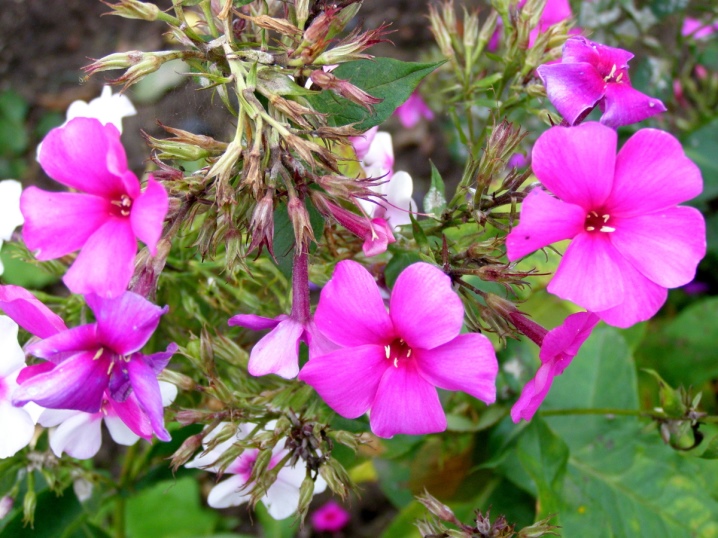
How does the disease manifest itself?
At the very beginning of the last month of summer, white bloom can be found on the flowers. It is not difficult to notice it, the lesions are literally striking. If left untreated, the disease will quickly disfigure the lush bushes of flowers.
Powdery mildew is real and false.
Both types of disease are provoked by a fungus. The false variety occurs at high humidity against a background of moderate temperature indicators, the real one - in dry weather with sharp jumps in temperature and humidity.
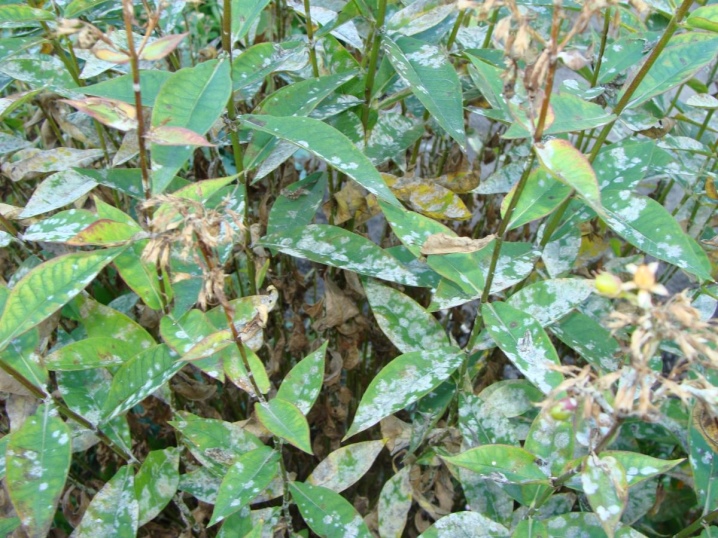
How to understand that phloxes are sick with powdery mildew:
- the upper surface of the leaves is covered with a whitish bloom;
- the structure of the plaque resembles felt or a very dense web;
- plaque primarily forms on the lower leaves, after which it passes to the young growth;
- dark brown spots form on both sides of the leaf - these are the formations of the mycelium, hence the spores of the fungus spread;
- the spots grow very quickly, merge, form extensive zones of damage;
- the leaves dry up, after which the fungus attacks the stems and inflorescences.

Powdery mildew is undemanding to the conditions for its development: it attacks plants quickly, expanding the boundaries of the lesion every day.
And more often it is young plants that have not yet managed to build up a special protective layer become its victims. As soon as a lesion is found, the diseased parts of the plant must be removed immediately. Fortunately, the disease can be treated, and if treatment is started on time, it will be successful.
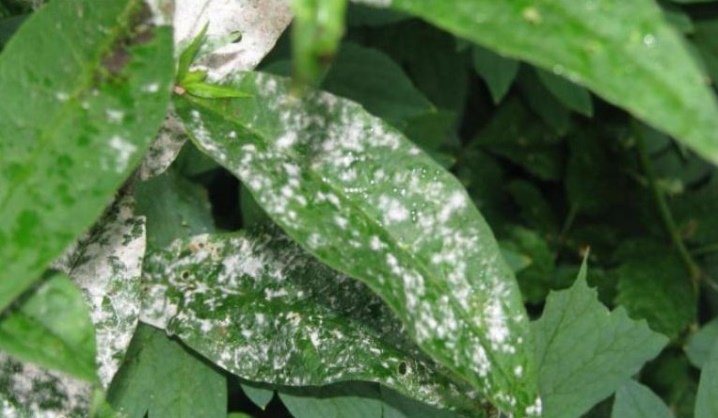
Why do phloxes get sick?
Most likely, the matter is in the inattentive examination of the plants. Really, diseases of flowering phlox can not always be quickly recognized... Therefore, try to carefully examine the flowers once a week, looking under the leaves, top and bottom.
Keep in mind that fungus can be transmitted to the plant through a garden tool that is not disinfected.
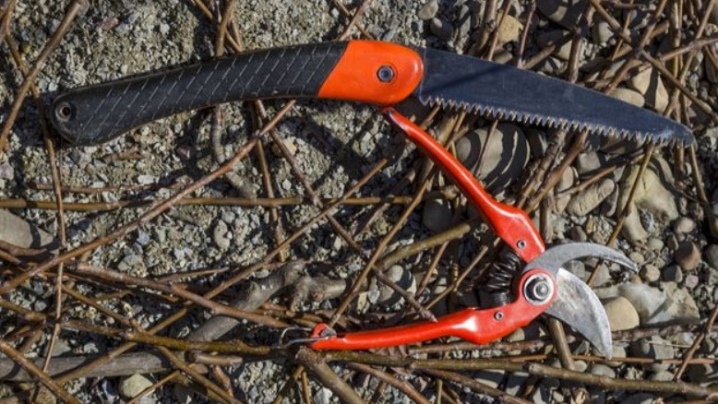
You increase your risk of illness if:
- you do not water phlox enough (you forgot to water it a couple of times, the plant weakens);
- replant them in summer or late spring;
- growing flowers in overly acidic soil;
- use too cold water for watering phlox in the heat;
- untimely thinning out plantings.
Pay attention to these negative factors: if you allow at least one of them, all measures to combat powdery mildew may be in vain. It is important not only to free the plant from the disease, but also to prevent the risks of a new infection.
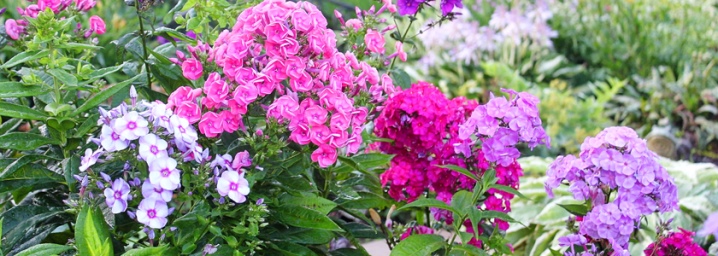
The best way to combat powdery mildew
Every experienced gardener will say that the best way to fight a fungal disease is to prevent it. From the very beginning of summer, the plant needs to be disinfected with copper-based preparations. ("Topaz" or any other fungicide). A good result will be given by the treatment of phloxes with a furacilin solution (20 tablets / 10 l of water).
Important! In processing already diseased plants, there is a strict rule: in order to save them, you need to spray the neighboring plants with special preparations.
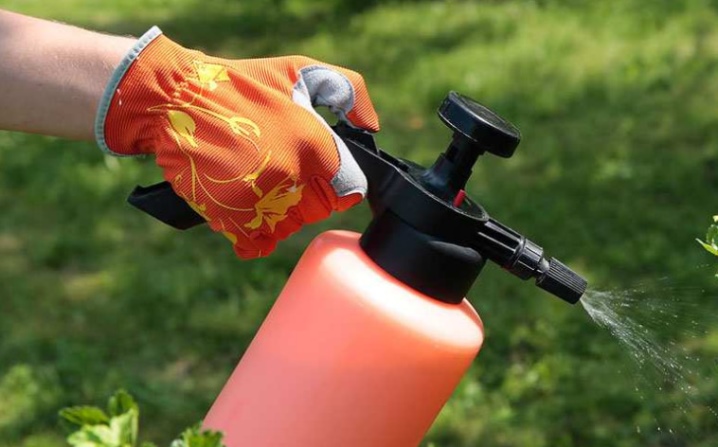
5 main rules for the prevention of powdery mildew.
- Repot the phlox to a new location every 4 years.
- Thin the stems to provide optimal ventilation for them.
- Dig up the ground.
- If you notice signs of leaf damage, pick them off without delay. Then burn it.
- Try to choose for growing those varieties that are resistant to diseases.
If the preventive measures did not help, or you, for example, forgot to process the plants at the beginning of summer, do not despair, diseased phlox can be saved in most cases.
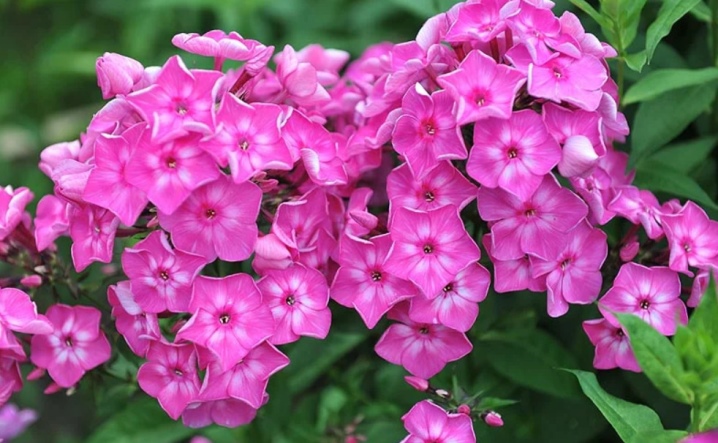
Folk remedies
There are 5 recipes, the demand for which is still great (even in conditions of high competition with a synthetic product). 5 recipes for fighting powdery mildew on phlox.
- Wood ash. Collect wood ash, for 300 g of ash you need 2 liters of water. Fill the ash with water, let the composition brew for 2 days. Strain the resulting infusion. Grate 7-8 laundry soap into it, mix the composition. Treat the plants with it twice, the interval between treatments is a week.
- Soda + soap. In one liter of water, dilute 5 g of soda ash (soda ash), 5 g of laundry soap. Spray flowers with this composition in the same way: 2 times at weekly intervals.
- Extract whey from sour kefir, mix it in water (100 g of whey / 1 l of water). Spray phlox with this mixture once.
- Garlic. Chop 50 g of garlic very finely, pour 2 liters of water over it. Leave the infusion for a day, during which time it will become concentrated. Treat flowers with this liquid.
- Rotten grass. Any rotten grass (let it be weeds) must be torn, mixed, and boiled over. Grass and water are used in equal proportions. The tool needs to be insisted for 5 days, then the infusion is decanted, and it is ready to process the ailing phlox.
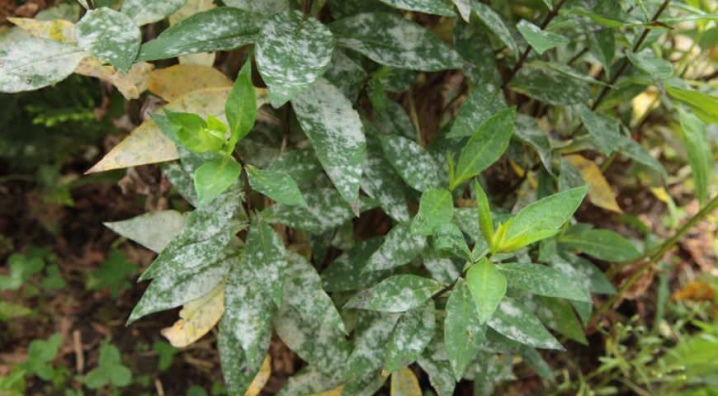
An alternative to these popular recipes is mullein infusion. Dissolve some manure in a bucket of water, spray phlox with this infusion. An effective option, it is believed that the risk of new lesion fragments appearing is practically zero. All of the above recipes are based on the reaction of microorganisms in their composition, which actively fight against the fungal pathogen. For plants, these are harmless ways, in every sense of the word - organic.
Observe the plants for 2 weeks. If it was not possible to get rid of the disease, and the new leaves are already covered with a white spider web, you will have to purchase antifungal agents.
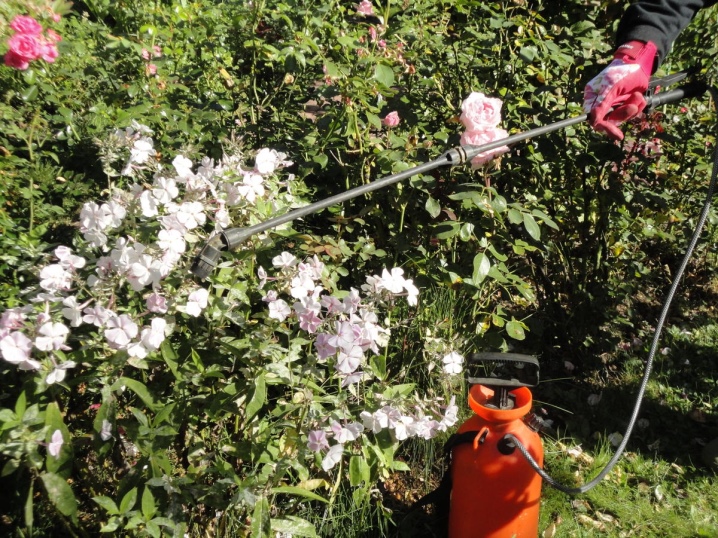
Special drugs
Use the preparations strictly according to the instructions: the packaging contains the dilution method, the spraying rules, and the number of procedures required to defeat the fungus. The treatment of phlox from powdery mildew involves the use of:
- colloidal sulfur solution (0.5-1%);
- Tiovila;
- "Coming soon";
- "Topaz";
- Balayton;
- Topsina;
- Fundazola.
Do not try to "crush" the fungus by quantity: choose one of the drugs, it is diluted and applied according to the instructions. Monitor the condition of the plant.
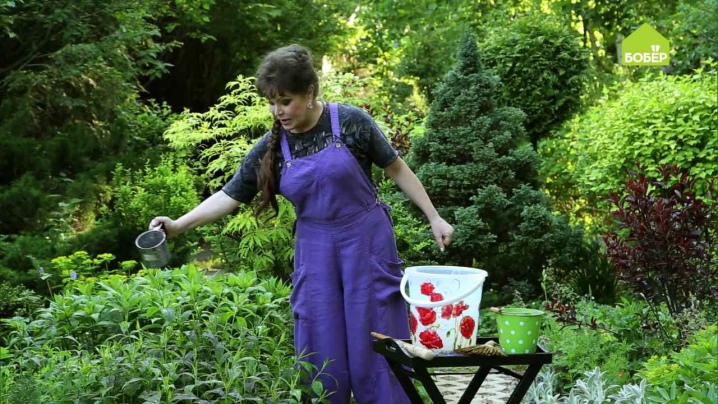
What happens if you do nothing?
If you do not fight powdery mildew, in the fall, the plaque from the leaves of phlox will replace the appearance of brown spots. The fungus is not in danger, so it prepares for winter. On the leaves of the plant, it begins to form fruiting bodies.
Fallen leaves become a source of infection - they infect the soil, therefore healthy plants will not grow in the place where they fall next year.
Start treatment with organic matter: if you have not allowed a total defeat, one of the natural remedies will definitely help. Do not mix organic recipes and the use of "chemistry", it will be stressful for the plant. Remember to burn the parallel leaves.
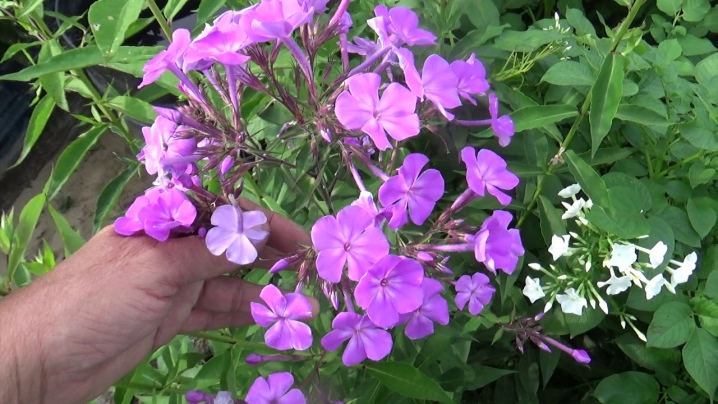
How to prevent phlox damage with powdery mildew?
Start with the simplest thing - keep the weeds out of the plant. Weed the flower bed in a timely manner so that weeds do not interfere with the normal growth, nutrition and respiration of phlox. How to protect phlox from fungus:
- Sprinkle the soil near the flowers with ash;
- while the plant is blooming, give it a universal feeding several times;
- do not overdo it with nitrogenous fertilizers - if the flower is received in excess, it will increase in growth, and intensive growth, alas, contributes to infection with the fungus;
- pick up the falling leaves of sick phlox from the ground and burn;
- be sure to dig up the ground in the fall, adding fertilizers with copper to it;
- in spring, thoroughly mulch the soil near the plants with humus;
- every 2 weeks you can prophylactically treat phloxes with a 1% solution of Bordeaux liquid.
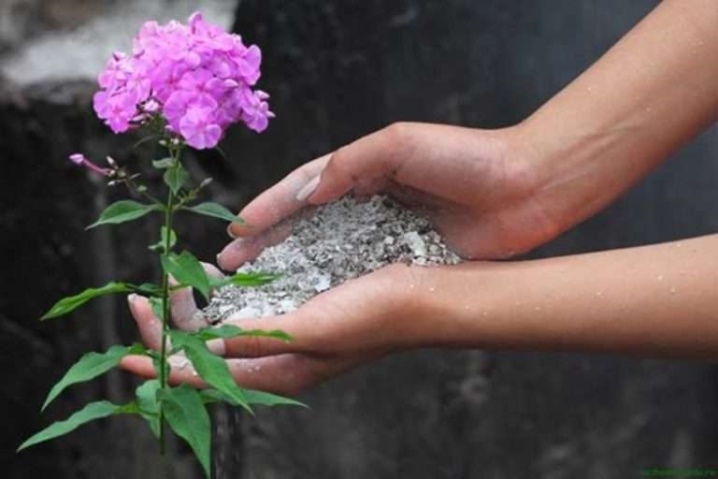
Disinfection of garden tools is one of the basic principles of order on the site.
For this purpose, you can use alcohol-containing wipes, medical sprays, manganese solution. Individual tools (their cutting surface) are calcined over a fire. Iodine-based preparations can also be used to disinfect garden tools; they help prevent the spread of fungal and viral diseases in the area.
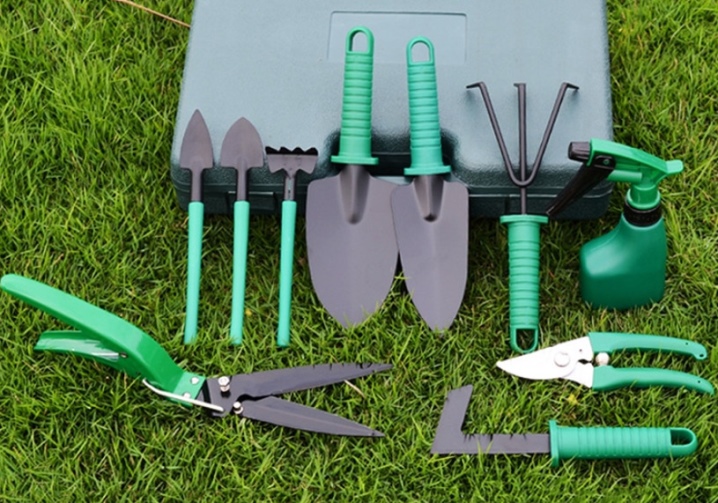
All of the above measures are worth doing: the fact is that powdery mildew does not hesitate in damaging the plant. For 3-5 days, she inflicts a crushing blow on him, hitting the flowers as much as possible.
Infection often occurs in the spring, since phloxes at this time are intensively gaining in growth, but the disease usually begins to manifest itself in the summer.
Therefore, from the very beginning of summer, examine phlox, paying special attention to the lower leaves (from which the defeat begins).
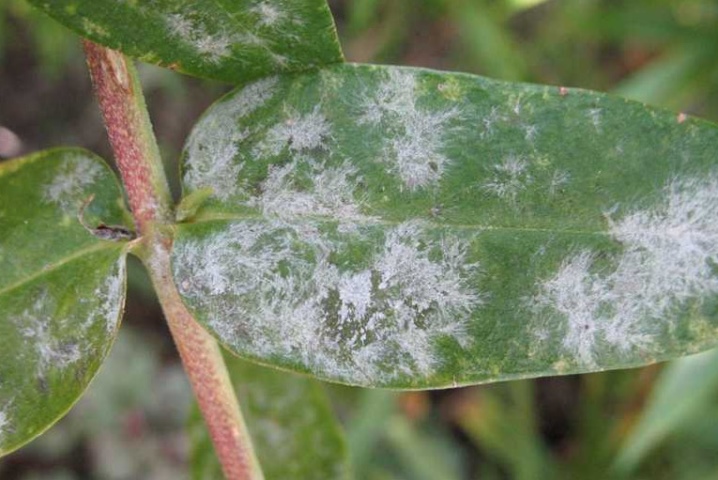
In the next video, you will learn how to prepare an effective remedy for controlling powdery mildew on phlox from phytosporin and soda.







































































































The comment was sent successfully.